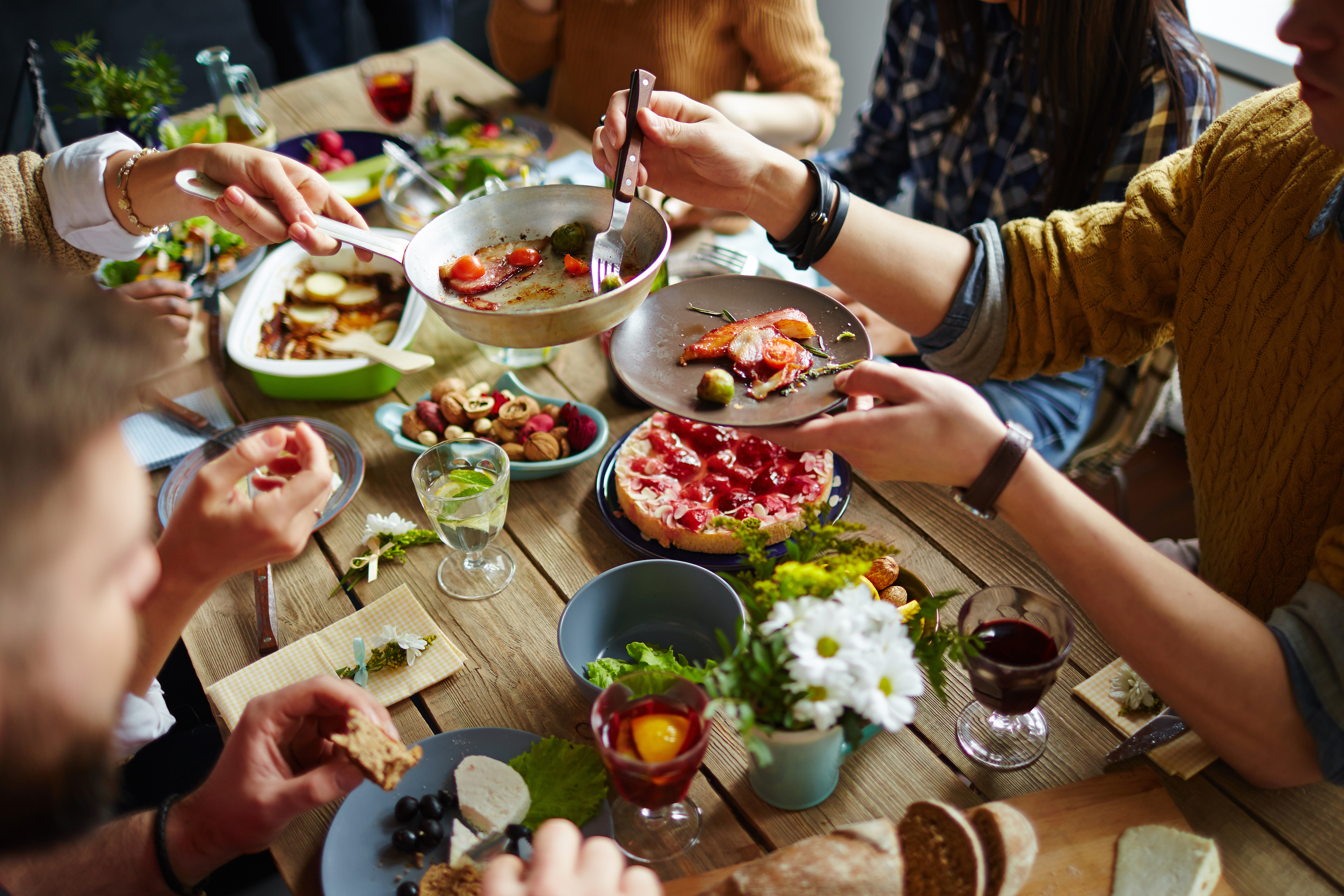
A NEW app is aiming to bring strangers to your dinner table.
VizEat lets you invite others into your home, and find others who’ll host you.
Dubbed “the Airbnb of food”, VizEat is capitalising on the craze for shared dining experiences.
But two Sunday Post writers disagree on whether sharing is the future of food, or if dinner is meant to be enjoyed alone…
Say no to the garlic bread menace
IT was Karl Marx who popularised the phrase “from each according to his ability, to each according to his needs”.
This essentially means that ownership of anything is a myth and we should all share everything.
However, if you look closely at Marx’s writing, there’s another wee passage which adds: “Unless it’s the garlic bread I ordered with my main meal. Keep yer grubby paws aff”.
I firmly believe that sharing is a wonderful thing, and I reckon humans would be much happier if we did a lot more of it.
Certain exceptions apply, however – that cold sore on your lip is something best kept to yourself.
Holiday photos, no matter how fascinating those pictures of you at a Moldovan Powdered Milk Festival might seem, are another.
The third is your dinner.
These days it’s increasingly trendy to have “shared food experiences” and, chances are, if you wander into a hideous hipster eatery, you’ll be confronted with a tapas or “small plate” menu.
In what has turned out to be a surprisingly effective scam, instead of a big bowl of one type of food (costing £7), everyone at the table orders two or three plates at £6 each.
What’s supposed to follow, in the heads of people who advocate this style of dining, is lots of cool people laughing and high-fiving as they trade deconstructed stovies or kale mist or whatever rubbish has been served up in place of a square meal.
The reality is very different, of course.
What usually happens is there are one or two decent dishes among the dozen or so ordered.
These prize plates are quickly picked clean – leaving the mustard and turnip goulash your daft dining companions have ordered to go untouched.
There are theories as to why people don’t like sharing food, and often it’s rooted in childhood.
In our office, it tends to be those who grew up as only children who are keen on picking food from others’ plates.
Presumably it’s because they don’t associate nicking a chip with having their wrist punctured by a fork-wielding sibling.
And perhaps these are the same people who won’t order a side plate of onion rings themselves, but will “just have some of yours”.
Look, I don’t turn up as you’re buying a new car and declare I’ll be driving it on weekends.
And I don’t want you coming round to my house to fill up a backpack with the contents of my biscuit cupboard either.
So have a break, and don’t have my Kit-Kat.
Stevie Gallacher
Want some of mine? Help yourself
EATING out is one of the great joys of life. Is there anything better than getting together with friends or family and breaking bread together?
Well, actually, since you ask, there is.
That’s breaking bread together and sharing it with those friends and family you’ve chosen to spend time with.
The family that shares together stays together.
So goes the old saying that only exists in my head.
But it’s true.
When we go out with my side of the family, it’s considered entirely normal to eye up each other’s food – and ask each other if we “want to try a wee bite”.
I’ve been with my husband for more than 30 years and he’s never got used to it yet that he’ll be tucking into his curry and someone’s fork will loom into view from the other side of the table and take a bit of his chicken Madras.
Mmm. Bit too hot for me. Don’t think I’ll be ordering that any time soon.
You see? I’m saving myself a fortune on meals I don’t like by finding out in advance that I wouldn’t enjoy them.
Or sometimes it goes more like this: “Oh, mamma mia! This is the best pasta – ever!
“Remind me to get that next time.”
It’s a two-way street, of course. If someone wants to try what I’ve ordered, I’ve no objection.
Help yourselves – the more the merrier!
I’ve had to learn to be clever about this sharing business, though.
I’m probably the slowest eater in the world.
I’m too busy blethering, listening in to table 19’s conversation and eyeing up what other people are having to eat quickly.
The first time I went out for tapas it was like survival of the fittest.
Out came the dinky wee dishes. And everyone dived in like they hadn’t eaten for a week.
I took a tiny bit of this and a teensy bit of that, tried it, had a drink, had a chat – and eventually had next to nothing to eat.
I had to stop for a fish supper on the way home.
Now, I load my plate with quite a lot so I don’t get left out.
And another thing. If we’re out together in a restaurant, don’t tell me you’re “being good” and order a salad…then steal my chips all night long.
Food isn’t about being good or bad.
It’s about being yum.
And while you’re nicking my chips, I’ll never feel the need to pinch your lettuce.
Order something interesting and we’ve got a deal.
Ali Kirker

Enjoy the convenience of having The Sunday Post delivered as a digital ePaper straight to your smartphone, tablet or computer.
Subscribe for only £5.49 a month and enjoy all the benefits of the printed paper as a digital replica.
Subscribe